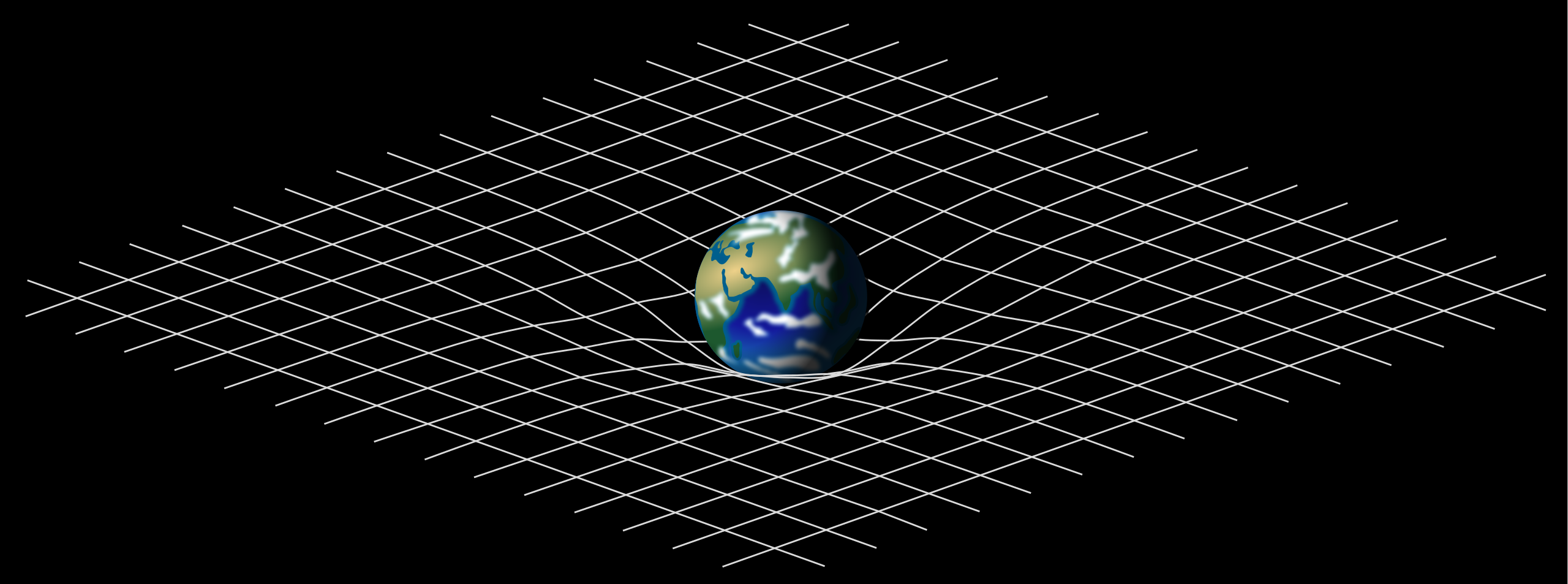In ancient times, people believed that there were four elements in nature: earth, water, air, and fire. According to the ancient mythos, this system of classical elements explained, in simple terms, the matter of the then-observable world.
Aristotle observed and reflected, as did his teacher Plato, that the space surrounding the earth, is also made up of an element, which is radically different from the four classical elements. This newly discovered element, making up the entire space regions of the celestial universe, became the fifth classical element. It was termed ether – or aether.
In philosophical notions, ether was not simply a purposeless material that somehow filled up what we now call space-time. But it was responsible for holding the stars and planets in their places, among the entire network of celestial bodies, in perfect balance and proportion.
Ether in Modern Science
The idea of aether has variated, evolved, and been presented numerous times, by several scientists, particularly in the past 300 hundred years. Ether gained huge popularity, specifically in the 19th century, when it was considered the medium through which all electromagnetic waves travel.
Since mechanical waves (like sound) need a medium to travel (air), then, by analogical reasoning, light and other electromagnetic waves must also traverse through a subtle medium, pervading the entire universe. Ether provided the answer to this mystery, at least for a while.
Ether “was assumed to be weightless, transparent, frictionless, undetectable chemically or physically, and literally permeating all matter and space” (Britannica, 2016). Let us go through a very brief journey to understand the concept – and evolution – of ether in science.
Rene Descartes
At the beginning of the 17th century, Rene Descartes, a French philosopher and scientist, welcomed the concept of ether into the scientific arena. He firmly believed that forces in the universe are transmitted through the direct contact of particles. Therefore, to explain the forces occupying the universe, that are able to affect objects at a distance, without any visible medium, Descartes resided in the idea that the entire space is filled with an indiscernible medium.
He proposed that space is a plenum filled with ether particles, portrayed as imperceptible, that have the tendency to transmit forces on material objects, which are immersed in it. Since ether permeated the entire space and matter, all objects in the universe were susceptible to its invisible and mysterious influence.
Isaac Newton
Isaac Newton (1643-1727), a key figure in the scientific revolution, is thought to have infallible interest in ether. His initial draft on gravitation was based on subtle ether particles, which filled up the entire space, and had varying densities, depending on the object they pervaded. In this model, ether played the role of the medium, and potentially the cause, of gravitational force.
Later, he presented the gravitational theory based on the laws of motion. He admitted, however, to not being able to unravel the source of the very force, which makes up the name of his groundbreaking theory.
The cause of gravity remains a mystery in the scientific realm, even today.
Thomas Young
The subject of ether entered the face of physics with force, once more, in the 1800s. Thomas Young – an English physicist known for resurrecting the wave theory of light – even at the ending stage of his career, was committed to “the luminiferous ether in particular (as the vehicle of light and radiant heat)” (Cantor, 1970, p. 62).
According to him, light traveled through space in a universal medium, called ether.
James Maxwell
James Clerk Maxwell, a renowned scientist of the 19th century, went one step ahead and proposed that all electromagnetic waves – including light – are propagated through space because of “vibrations of the ether” (Knowino, n.d.).
Hendrik Lorentz
Hendrik Lorentz, a highly esteemed Dutch physicist, was convinced of the existence of ether from the start of his scientific pursuit till the time of his last breath. Lorentz also won the Nobel prize, jointly with Pieter Zeeman, in 1902, for presenting his theory of electromagnetic radiation.
Electromagnetic radiation essentially explains the flow of energy in the form of electromagnetic waves (such as light waves, radio waves, among others), gliding through space and material objects alike, at the universal speed of light. Electric and magnetic fields flow through the universe in a mutually linked manner, where they consistently float at right angles, each field moving perpendicular to the other.
The carrier of these electromagnetic waves, as maintained by Lorentz, is none other than ether. According to him, motions have an “absolute character” – which “has to be understood as relative to the ether” (Kox, 1988).
The Decline of Ether
The concept of ether faced a stunning blow after the Michelson-Morley experiment, which failed to detect “detect the velocity of Earth with respect to the hypothetical luminiferous ether” (Britannica, 2020). The said result led to Einstein’s Special Theory of Relativity.
Ether & Special Relativity
Although Einstein never rejected the existence of an ether, his special relativity was enough to gradually convince the scientific world to cast away the concept of an absolute medium or element.
Einstein presented that everything is relative to everything. In the continuum of space and time, where every motion and position (distance) is relative, there appeared no need for a universal frame of reference, which was the role that ether played in the previous theories.
In the 19th century, scientists who were open to the existence of ether, looked up to it as the medium for light to travel. Einstein proposed that light traveled through the space-time continuum at a constant speed, everywhere in the universe. The speed of light is the universal constant. It is identical to all observers, in the relative universe.
General Theory of Relativity
Special relativity, nevertheless, was limited to inertial frames of reference, where no external force is subjected. The all-encompassing force of gravity, therefore, was left out. Including the existence and influence of gravity on this relative universe became a new task for Einstein.
Fifteen years after he presented his special relativity, Einstein dominated the scientific realm, once more, with his General Theory of Relativity. The existence of an ether, as we will show now, may become a prerequisite to comprehending general relativity.
Gravity is one of the four fundamental forces of the universe. It is also the most mysterious because gravity does not exist as a physical reality; its existence is conceived by the influence of a pull-force in the universe, present in the matter and pervades space. The world studies this force as gravity.
Einstein contemplated that gravity, existing in space-time, must affect light. He found that gravity tends to bend the path of light, contrary to the view that light – the universal constant – moves in a straight line. The cause of this bend, as explained by Einstein, is not essentially an external force, dominating space-time, but in fact, space-time is itself a curved phenomenon. Gravity simply describes the geometric properties of this curvature.
This constitutes the premise of the General Relativity, where gravity, instead of being a force exerted on mass, as proposed by Newton, is essentially the geometric property or product of “the curvature of space-time.” Light, then, according to this perspective, travels in a straight path, laid down by the curved space-time.
Interestingly, the nature and extent of the curve are decided by matter itself, which exists in the universe in the form of stars, planets, and other heavenly bodies. The mass of a heavy planet like Earth, for example, is responsible for producing a bend in space-time, which defines Earth’s gravitational field (see the figure below).

John Wheeler, an American theoretical physicist who revived the general theory of relativity after World War II, comments on the relationship between mass, space-time and gravity: “matter tells space-time how to curve, and space-time tells matter how to move.”
Ether in General Relativity
We have seen from the foregoing discussion that matter, being a physical quantity, can influence space-time, which, then, should also contain physical properties. That is, space-time is filled with ‘physical’ elements, which may be imperceptible, but are responsible for the many observed phenomena, such as constituting the shape and form of space and time. Such physical qualities may imply the existence of the long-debated element: ether.
This was elaborated by Einstein himself, during his lecture Ether and the Theory of Relativity, in 1920. An excerpt from his lecture, which is relevant to our discussion, is given below:
“…According to the general theory of relativity space is endowed with physical qualities; in this sense, therefore, there exists an ether. According to the general theory of relativity space without ether is unthinkable; for in such space there not only would be no propagation of light, but also no possibility of existence for standards of space and time… nor therefore any space-time intervals in the physical sense” (Einstein, 1922).
Concept of Ether in a Nutshell
The notion of ether, in the scientific realm, seemed to have developed and evolved every time knowledge or a theory is advanced, making the concept of ether previously described, redundant. With time, some scientist or philosopher posited an idea under the name of ether anew, transcending the previous idea.
At every step, ether found its way to go beyond the acquired human knowledge, to describe some phenomenon, as a placeholder, that has not been evaluated or explained, objectively. From ancient Greek philosophy to the modern scientific era, ether grasped people’s curiosity at every turn.
Ether has become obsolete now. It was a theoretical concept, which failed to be observed. In contrast, there are emerging concepts in physics, which are “forced on us by the observations,” and hence demand theoretical focus and explanation. These are dark matter and dark energy. The exact nature, characteristics, and evolution of these components of the universe are currently being explored.
Notes
1. The comment by Louis de Broglie on the top of the page was written in regard to sub-quantum media. Taken from Hatifi, M., Willox, R., Colin, S. & Durt, T. (2018). Bouncing Oil Droplets, de Broglie’s Quantum Thermostat, and Convergence to Equilibrium. Entropy, 20(10), 780.
References
Britannica. (2016). Ether. Encyclopedia Britannica.
Britannica. (2020). Michelson-Morley experiment. Encyclopedia Britannica.
Cantor, G. (1970). The changing role of Young’s ether. The British Journal for the History of Science, 5(1), 44–62.
Einstein, A. (1922). Ether and the theory of relativity. In Einstein: Ether and Relativity. Methuen & Co. Ltd, London. MacTutor.
Knowino. (n.d.). Ether (physics). Tel Aviv University.
Kox, A.J. (1988). Hendrik Antoon Lorentz, the ether, and the general theory of relativity. Archive for History of Exact Sciences, 38, 67–78.
Mysid. (2015). Spacetime curvature schematic [image]. Creative Commons.







1 thought on “The Rise, Evolution & Decline of Ether”
Thank you for the amazing blog post!